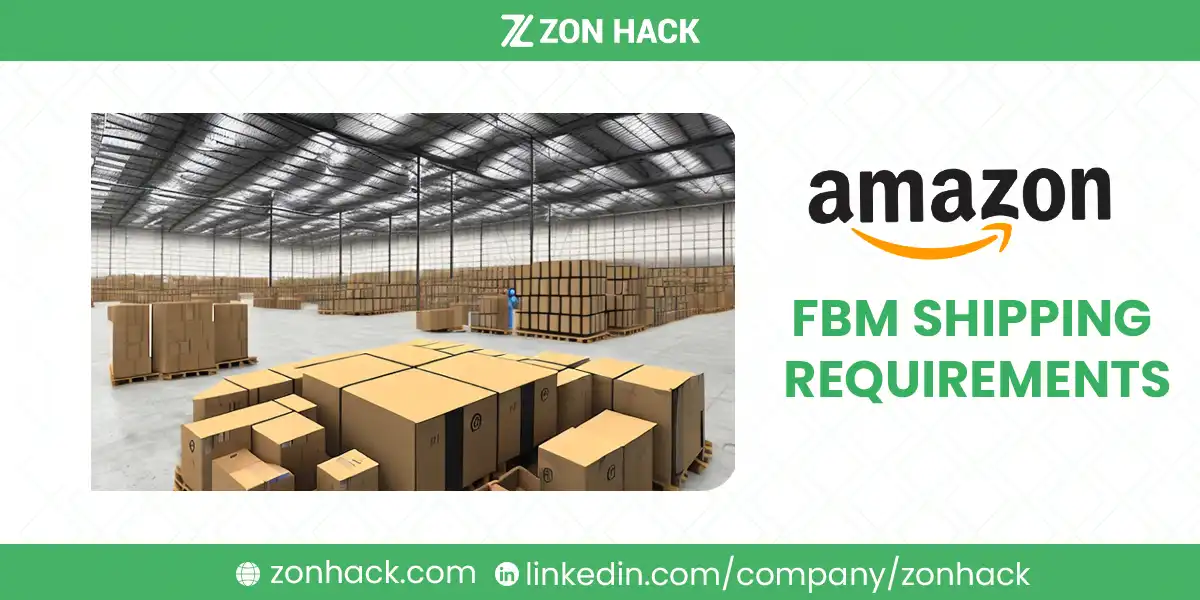Managing your fulfillment process can be the defining factor in your success as an Amazon seller. For those opting for Amazon FBM (Fulfilled by Merchant), understanding and mastering its shipping requirements is critical. Unlike FBA (Fulfilled by Amazon), where Amazon handles storage, packing, and delivery, FBM places these responsibilities squarely on the seller’s shoulders. This guide walks you through the essential shipping requirements, strategies, and tips to help you navigate the complexities of FBM with confidence and clarity.
What is Amazon FBM?
Amazon FBM is a fulfillment method where sellers list their products on Amazon, but the responsibility for storing inventory, packaging, shipping orders, and managing customer service lies with the seller. While FBM gives sellers more control over their operations, it also demands higher levels of diligence and expertise to meet Amazon’s stringent standards.
Imagine you’re running a small handmade jewelry business. By choosing FBM, you retain complete control over how your products are packaged, shipped, and presented to customers. But unlike Amazon’s FBA model, which handles this for you, FBM requires you to ensure every step meets Amazon’s performance criteria.
FBM vs. Other Fulfillment Models
FBM stands apart from other options like FBA and Seller Fulfilled Prime (SFP). With FBA, Amazon stores your inventory in its warehouses, packages products, and delivers them to customers. This service includes access to the Prime badge, making your products more appealing to customers. However, it comes at a cost—storage fees, fulfillment fees, and less control over branding.
Seller Fulfilled Prime combines the flexibility of FBM with the visibility of the Prime badge, but it requires meeting strict shipping standards, such as offering same-day or two-day delivery. Then there’s dropshipping and third-party fulfillment, which can be cost-effective but limit direct control over inventory and shipping. FBM offers the balance of control and flexibility, especially for niche sellers who prioritize personal branding and inventory management.
Amazon FBM Shipping Requirements
The success of your FBM strategy largely hinges on your ability to meet Amazon’s shipping requirements. Let’s dive into the key aspects of this process.
Setting Up Your Shipping Templates
The first step in your FBM journey is configuring your shipping templates in Seller Central. These templates allow you to customize shipping methods, rates, and handling times for different regions and product types.
For example, if you sell handmade items, you may want to offer expedited shipping for customers willing to pay a premium and economy shipping for those seeking affordability. Amazon provides flexibility, but the key is balancing customer expectations with your logistical capabilities.
When setting up a shipping template:
- Define regions you’re willing to ship to (domestic and international).
- Set clear handling times, ensuring you can process orders on time.
- Specify shipping rates for standard, expedited, and free shipping options.
Having a well-configured shipping template not only enhances your customer experience but also helps you meet Amazon’s on-time delivery metrics.
Packaging Guidelines
Amazon’s packaging requirements go beyond just ensuring products arrive safely. They emphasize customer experience and compliance with shipping standards.
For instance, Amazon prohibits the use of certain materials like biodegradable packing peanuts due to their potential to create messes. Sellers must also label packages clearly, ensuring visibility of the tracking information and product details.
For fragile items like glassware, use double boxing and bubble wrap to prevent damage during transit. Oversized products may require specialized packaging to comply with carrier weight and size restrictions.
Amazon expects sellers to adopt environmentally responsible practices, which can also serve as a great branding opportunity. Highlight your commitment to sustainability by using recyclable or biodegradable packaging materials.
Meeting Amazon’s Shipping and Performance Standards
Your success on Amazon depends on meeting its strict performance metrics:
- Valid Tracking Rate (VTR): Ensure that at least 95% of your orders include valid tracking numbers.
- On-Time Delivery Rate (OTD): Maintain a minimum 97% success rate for on-time deliveries.
- Late Shipment Rate (LSR): Avoid late shipments to keep this rate under 4%.
Failing to meet these metrics can lead to account suspensions or loss of selling privileges. Automating your order tracking and regularly monitoring performance reports in Seller Central can help you stay compliant.
Handling Customer Service and Returns
As an FBM seller, customer service is your responsibility. Customers expect prompt responses to their inquiries, especially when issues arise with their orders.
When a customer contacts you about a delayed package, responding quickly with a solution (e.g., refund or replacement) can turn a potential negative review into a positive experience. Establishing clear return policies and ensuring they’re easy to understand is equally critical.
Amazon allows sellers to issue returnless refunds for low-cost items, a strategy that can reduce logistics costs while maintaining customer satisfaction.
Choosing the Right Shipping Services
Selecting the right shipping carrier is vital for maintaining cost efficiency and meeting delivery expectations. Popular carriers like USPS, FedEx, and UPS offer reliable options for domestic shipping, while DHL excels at international logistics.
When choosing a carrier, consider factors like shipping speed, cost, tracking capabilities, and insurance options. For instance, USPS is ideal for lightweight packages, while FedEx is better suited for large or time-sensitive shipments.
Using Amazon’s Buy Shipping Services allows you to access discounted rates and ensures tracking details are automatically updated in Seller Central.
Special Considerations for Product Types
Certain product categories come with unique challenges.
Fragile items, such as ceramics or glassware, require reinforced packaging and careful handling instructions for carriers. Oversized goods, like furniture, can incur higher shipping costs, necessitating negotiation with carriers for discounted rates. Sellers of perishable products must invest in temperature-controlled shipping options to maintain product quality during transit.
Summary
Amazon FBM offers unparalleled control and flexibility for sellers willing to take on the challenge of managing their fulfillment processes. By mastering the shipping requirements and employing best practices, you can build a successful and sustainable business. Stay proactive, monitor your performance metrics, and continuously optimize your operations to deliver exceptional customer experiences.




